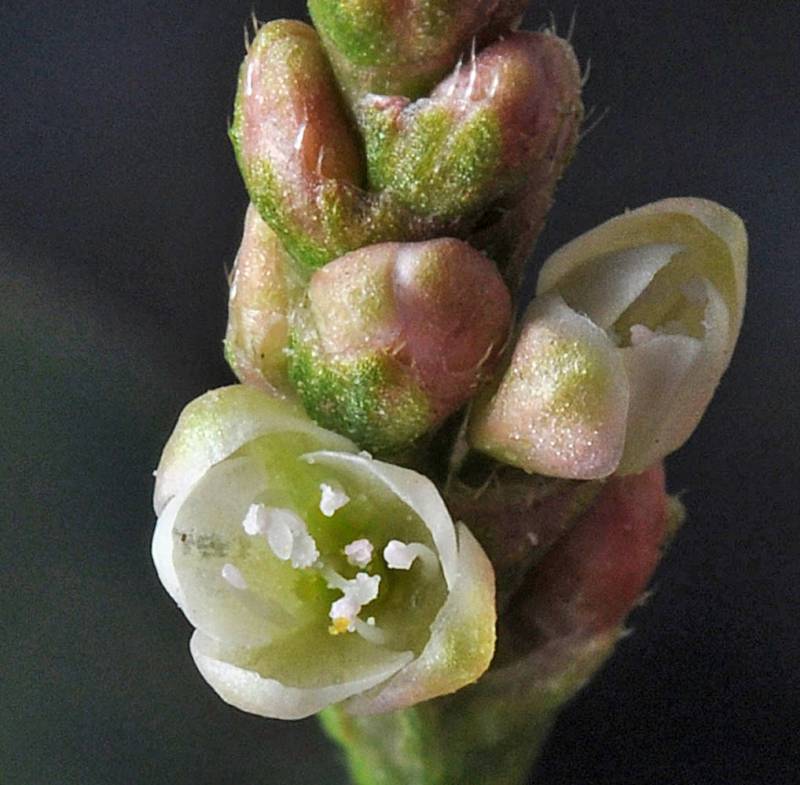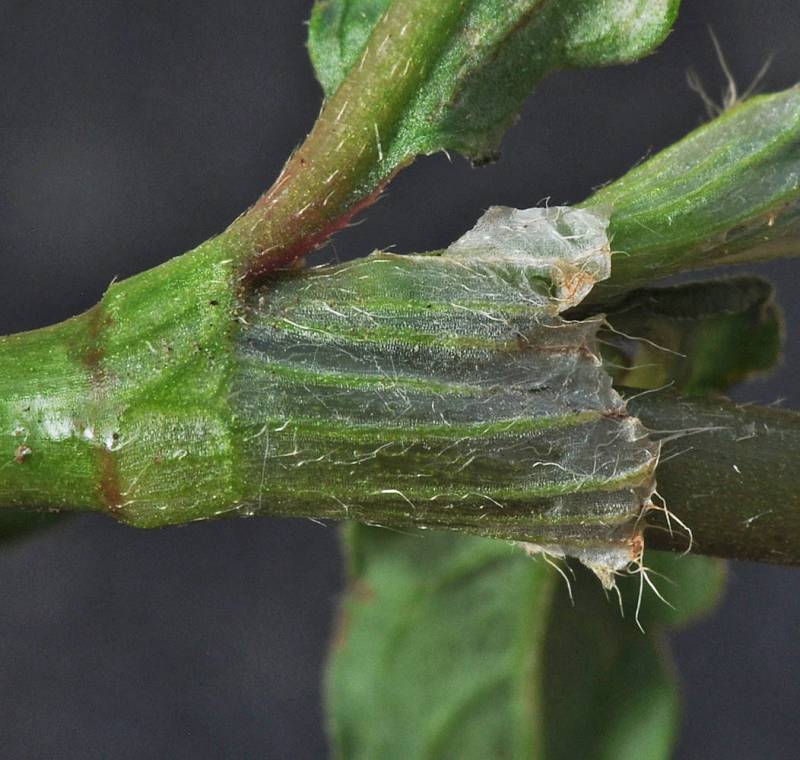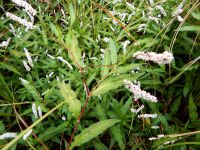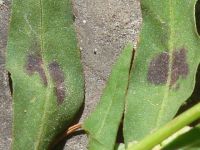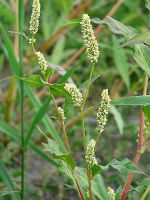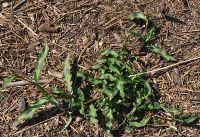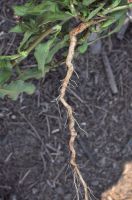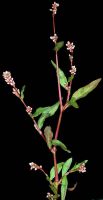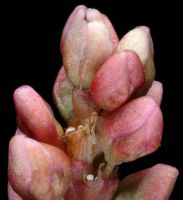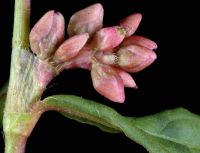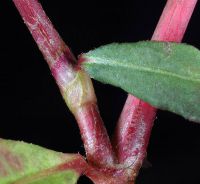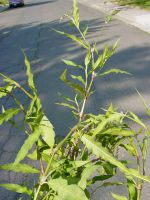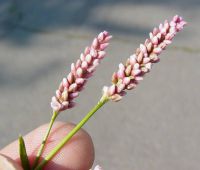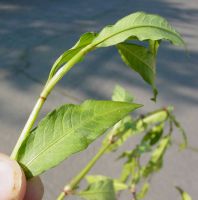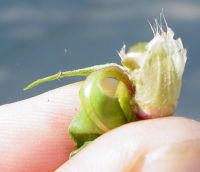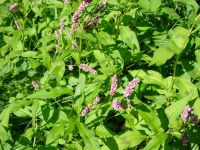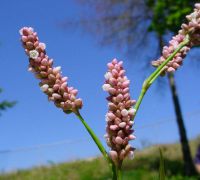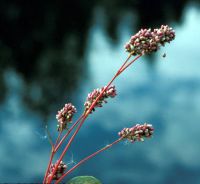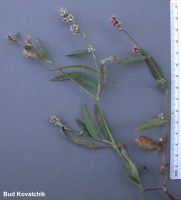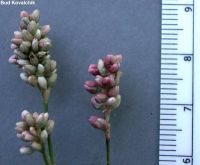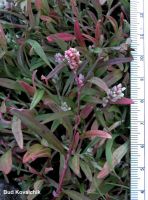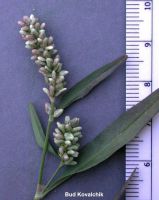Distribution: Occurring on both sides of the Cascades crest in Washington; Alaska to California, east across North America to the Atlantic Coast.
Habitat: A weedy species, usually on moist, cultivated or otherwise disturbed soil.
Flowers: March-September
Origin: Introduced from Eurasia
Growth Duration: Perennial
Conservation Status: Not of concern
Pollination: Bees, flies
Usually a glabrous annual, simple to branched, erect to spreading, up to 1 m. tall.
Leaf blades elliptic-lanceolate to narrowly oblong-lanceolate, 5-10 cm. long, usually with a purplish triangular or lunar spot about mid-length, narrowed to a short, thick, non-jointed petiole; stipules obliquely cylindric-conic, never lacerate, bristly along the nerves.
Inflorescence of crowded, pedunculate, compound racemes; flowers white, usually strongly pinkish-tinged; perianth 1.5-2 mm. long, 5-parted.
Achene lenticular, 2-2.5 mm. long, ovate-rotund in outline, black, smooth and shining.
Publication: Nat. Arr. Brit. Pl. 2: 269. 1821.
PNW Herbaria: Specimen records of Persicaria maculosa in the Consortium of Pacific Northwest Herbaria database.
WA Flora Checklist: Persicaria maculosa checklist entry.
OregonFlora: Persicaria maculosa information.
E-Flora BC: Persicaria maculosa atlas page.
CalPhotos: Persicaria maculosa photos.
USDA Plants: Persicaria maculosa information.

